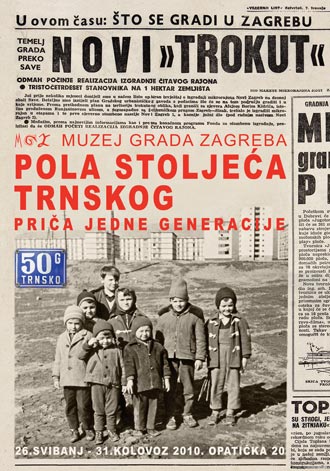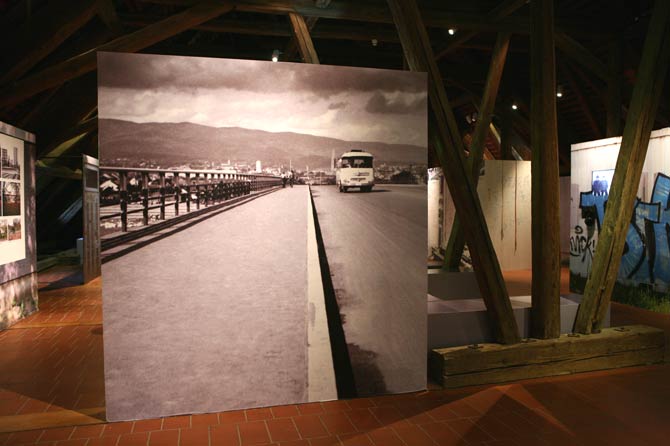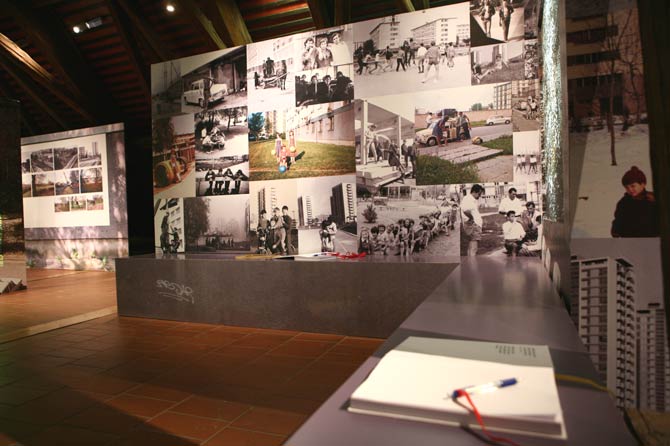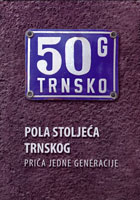Trnsko – the first 50 years, a story of one generation
Exhibition concept: Kristian Strukić
Exhibition design: Bilić_Müller Design Studio
Poster design: Miljenko Gregl
 The Zagreb City Museum exhibition entitled “Trnsko – the first 50 years, a story of one generation” initiated the implementation of “The Zagreb Quarters” Project.
The Zagreb City Museum exhibition entitled “Trnsko – the first 50 years, a story of one generation” initiated the implementation of “The Zagreb Quarters” Project.
“The Zagreb Quarters” Project
Following its unification in 1850, the city of Zagreb was spreading intensively to reach the size known today. This can be supported by statistical data according to which the 1857 Zagreb had only 18,000 inhabitants. In 1900 there were 60,000 and the city covered about 65 km2. One hundred years later the population was 780,000 on 640 km2.
Spreading of the city resulted in defining areas formed under different social and historical circumstances which had impact on their formation. These areas, i.e. quarters, are administrative, urban and architectural units separated either symbolically or due to the personal perception of their dwellers. The above mentioned elements do not necessarily match. Quarters in a city as big as Zagreb today, become immediate surroundings of their inhabitants, through which they identify themselves but also become closely connected to the city they live in.
The methods of forming and identifying the quarters shall be presented through analytical and scientific approach of interconnecting the scientific, social, historical, urban and architectural segments (the use of different disciplines shall be balanced to meet the general character of the quarter).
Analysis and presentation of individual Zagreb quarters will follow the trends of the city spreading, from its unification in mid 19th century to the present times but presented backwards (to emphasize individual areas which had not been sufficiently evaluated so far), starting with the areas to which the city has been spreading in contemporary times, making this last giant step across the river Sava.
The exhibition “Trnsko – the first 50 years, a story of one generation”
The exhibition presents the first completely planned and urbanized new Zagreb quarter. In the area of New Zagreb, the then South Zagreb, there were 25 residential units planned of the same kind, but only part of them have really been built. The exhibition speaks about an urbanization concept used to solve the largest city issue of the time i.e. the lack of flats, caused by intensive migrations as a result of industrialization. It also reminds us of Zagreb crossing the river Sava, and turning meadows, fields, Sava’s armlets and swamps covering the area, into new residential complexes.
Another part of the exhibition speaks about the life in this quarter, everyday problems, connections established among its inhabitants and creation of the “quarter spirit”. Its basis is observation of one generation of inhabitants from the time when they settle down in the quarter as very young people/children in early 1960s. The subject matter of this observation is their life near the construction site and growing up with the quarter until 1980, when they mostly move to other parts of the city or the world. Today, the reunion of this “first” generation but also the new generations of Trnsko in the Virtual Museum of the Trnsko Quarter, tell us that the spirit of the quarter had not been influenced by the spatial dimension. They have kept the “Quarter Spirit” developed while they were growing up in the area regardless of the place they reside at the moment.
Connections to wide social community as a part of the Project, is in this exhibition visible through cooperation established between the Zagreb City Museum and the Virtual Museum of the Trnsko Quarter. By accepting the idea of Mladen Klemenčić and Ratko Cvetnić proposing Trnsko to be the representative of the New Zagreb quarter in this Project, we have tried to implement the connection to wide social community in the fundamental concept of the exhibition itself. Therefore, the exhibition has been based on the Zagreb City Museum collection of photographs but also on about 65 private albums belonging to mostly early New Zagreb newcomers (from the Virtual Museum of the Trnsko Quarter holdings).
During the exhibition a gathering of all the people whose private collection items have been used in preparation of the exhibition will be organized. They will evoke memories from their everyday life as captured on the selected photographs. Such informal “Round Table Discussion” will be digitally recorded and the output material entitled “The Quarter Stories” will become the integral part of the Zagreb City Museum holdings, a part of which will be available on the Virtual Museum of the Trnsko Quarter and the Zagreb City Museum websites. Thus, the exhibition will become the site of reviving memories. Such approach should also contribute to authenticity of the content, accompanied by the way of speaking unique to each of the presenters.
Certain exhibition elements like the “Kvartovska govornica” (“Speaker's Corner”) or places where visitors will have the opportunity to leave their spoken or written messages or revive memories, will accompany the entire “Zagreb Quarters” Project, and will be a direct link between the Project and the visitors.
Kristian Strukić
Sponsors

Pictures from the exhibition









photo Miljenko Gregl, ZCM
 Exhibition catalogue
Exhibition catalogue
Strukić, Kristian. Trnsko – the first 50 years, a story of one generation.
Zagreb : Zagreb City Museum, 2010

